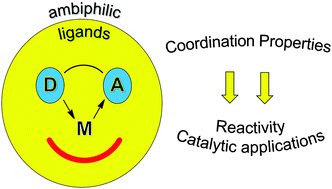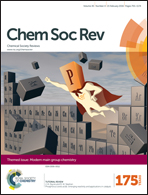Complexes of ambiphilic ligands: reactivity and catalytic applications†
Abstract
Since the mid 2000's, the incorporation of Lewis acid moieties in ligands for transition metals has been studied extensively. So-called ambiphilic ligands were shown to possess rich and unusual coordination properties and special focus was given to the coordination of Lewis acids as σ-acceptor ligands (concept of Z-type ligands). Recent studies have demonstrated that the presence of Lewis acids at or nearby transition metals can also strongly impact their reactivity. These results are surveyed in this review. The stoichiometric transformations and catalytic applications of complexes deriving from ambiphilic ligands are presented. The different roles the Lewis acid can play are discussed.

- This article is part of the themed collection: Modern Main Group Chemistry

 Please wait while we load your content...
Please wait while we load your content...